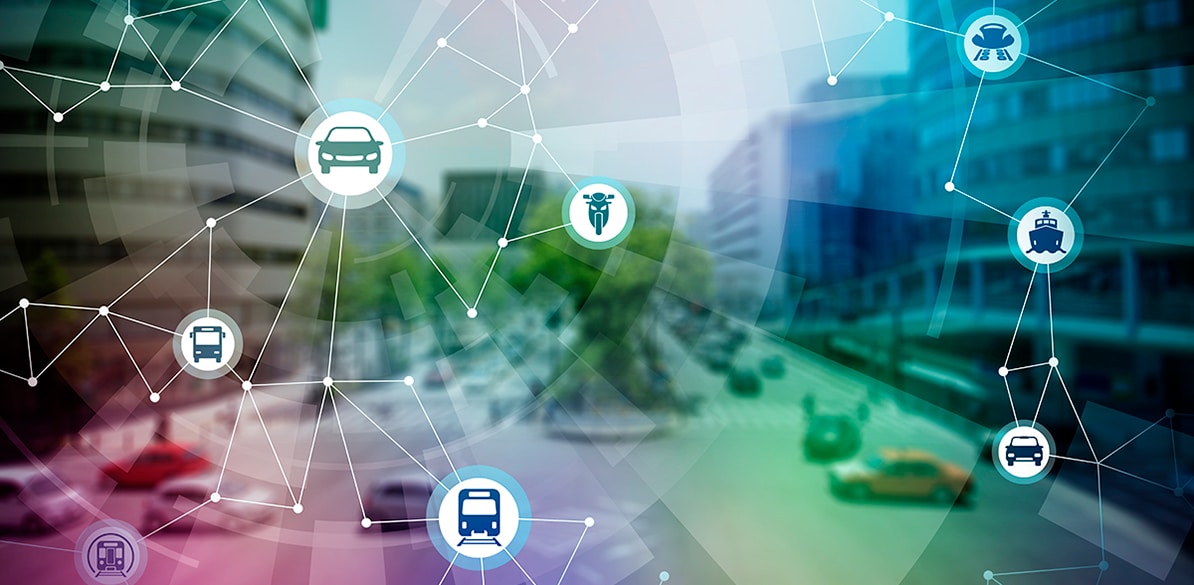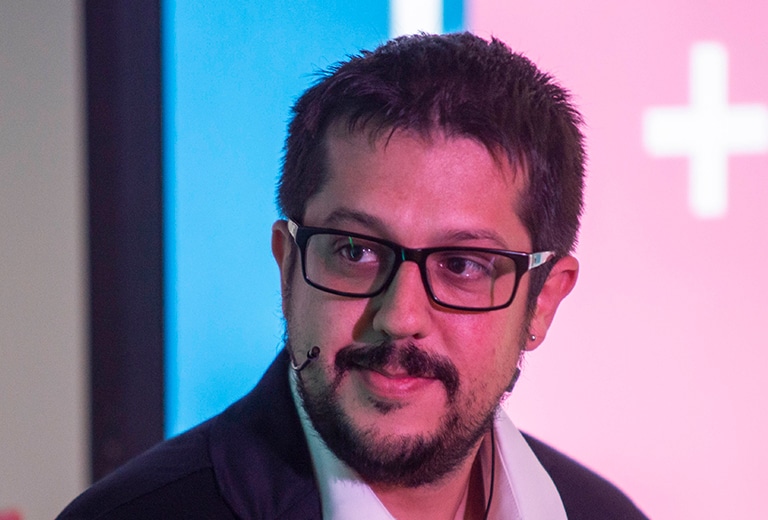Ualabee, playing an active role in transforming cities
We talk about this mobility project, a semi-finalist in the fourth edition of the Fundación MAPFRE Social Innovation Awards

Ualabee was a semi-finalist in the Accident Prevention and Safe and Sustainable Mobility category in the fourth edition of the Fundación MAPFRE Social Innovation Awards. Their project, already implemented in cities in Argentina, Chile, Colombia, Mexico, Peru and Uruguay, provides data for monitoring the city in real time and helps plan the best means of transport, streamlining urban mobility and promoting sustainable mobility habits.
We want to know more about this project: how it all started, what impact it has had and what its future prospects are. And to tell us all about it, we have the opportunity to interview Joaquín Di Mario, CEO of the company and member of our Red Innova, a network comprising the semi-finalists and finalists of all the editions of our awards, to scale the scope of their projects.
UALABEE is a new company, set up in 2019 to provide a comprehensive solution to travel in cities, focusing on mobility as a service (people-centred and not car-centred) and, with that as a starting point, offering efficient solutions for the use of different means of transport in the city to solve our needs and traffic problems.
But the story began much earlier. Joaquín di Mario, CEO of the company, became interested in the world of transport back in 2012, when he prepared his thesis project at the Faculty of Systems Engineering in which he developed a fleet management system for buses with SMS queries on where each unit was coming from. As a result, he discovered that in Latin America more than three years of a vehicle’s life is lost due to the time it takes to move from one point to another in cities that continue to grow and where the impact of traffic on the economy, society and the environment is very serious. In fact, road transport generates 25% of greenhouse gases.
Ualabee was set up to provide a solution for the people who commute through these cities on a daily basis. Joaquín di Mario tells us how.

What is your main line of work?
We have identified two lines of work.
On the one hand, we have a product, a B2C app for the end user, which integrates multiple means of transport, for example, public transport, micro mobility, and so on, all on a single platform. This means the user can find the direct or most efficient route from one point to another in the city by combining all these means of transport, depending on distance, time and the cost of unforeseen events. But we also measure the carbon footprint of each trip by comparing the means by which the person moves versus if they had used their private car; this allows us to understand their mobility habits and whether or not they are sustainable.
On the other hand, we work in other areas that have to do with the information that users generate anonymously. Ualabee offers mobility tools and data analytics, in aggregated and minimised form, so that different verticals in the smart city industry can boost the mobility and urban planning business. Our customers are various governments and operators who use our data to propose improvements that allow them to better programme the public transport network, providing data that enables this industry to evolve, but in an orderly way.
What social innovation does your project bring to the table? What makes you unique or different?
UALABEE’s strength has been to build a community around this industry; it is our users themselves who continuously improve the information. If a user sees that a route has been modified or that a station has changed location, they can report this directly through the app; if they see that there is a problem on the public road that is affecting the normal operation of a route, they can also report it. This triggers warnings that are sent to the other people who regularly use the route, and generates very precise information in real time. All the transport information is thus updated in real time.
Another strong point is that this collaborative community, at the same time, allows us to greatly reduce positioning costs. To give you an idea, when we founded Ualabee in 2019 we had one million unique users and 95% of them had joined without the need for marketing actions, it was the community itself that made the product go viral, by word of mouth.
We also generate sustainable mobility habits by measuring the carbon footprint of users’ trips; we do this because the users who contribute the most, those who have the most sustainable behavior, are rewarded with free trips. We do not use the money from top-ups as an income stream, instead it is returned to these users.
We have various impact metrics and we also measure other things, such as the level of connectivity in the city, but what really makes us unique is the fact that the community is committed to the cause.
How do you feel about playing an active role in transforming cities and improving the quality of life of the people who live in them?
Proud. It is the people themselves who have always motivated us to continue with this project, even in very difficult times for the company. Hearing our users thank us for solving such an important problem in their daily lives makes the whole process easier.
What were the challenges you encountered throughout the project?
Challenges? There were plenty… The first was that we started talking about mobility in a place where it is not discussed, because in Latin America it is still difficult to talk about mobility as a service, as happens in Europe. This created many challenges for us, even in terms of raising capital and financing for this particular industry.
On the other hand, just as we were growing, there was a pandemic, and mobility was among the most severely affected services. As a result, user metrics dropped by more than 80%, all at once, in March 2020. This forced us to change our business model. We had come up with a B2C model, wanting to move into a transportation wallet payment model, but it was not the right time, so we continued working with the user, but based on the information generated, offering the information to other sectors.
Another challenge was to start in a city where there was absolutely no transportation data. Today our technology allows us to obtain this information very quickly and our users keep it updated. Getting to this point has been a great challenge that we solved and that today is allowing us to grow.
What achievement at Ualabee has given you the most personal satisfaction?
Having been able to maintain the team from the beginning, despite all the external market factors that affected our industry (from COVID-19, the war, to the delicate situation with technology companies around the world). It is very nice to be able to continue growing with firm steps in spite of the circumstances.
What is your outlook for the future?
I will break it down into two big markets. On the one hand, we want to position ourselves strongly in Latin America. I think there are some very interesting cities to work in, Bogota, for example. Colombia has a lot of traffic programs and, actually, Brazil is an important market. So our target is Latin America, especially the big cities.
We are also evaluating other markets, maybe not going out as a brand, but licensing other companies to make use of our mobility service platform, using our technology and our user-experience management model.
Speaking of Latin America, what is happening in your region?
There is a big challenge as COVID-19 brought back some bad habits, like the tendency to use private cars again… But the challenges are also related to understanding how multiple transport operators, including cars, can coexist. People in cities need to understand that if we make smarter use of vehicles we can actually make our city’s transport network more efficient. Even if you have a car, you could park it somewhere and continue your trip by other modes of transport, such as an electric scooter or the subway. Young people are already growing up without the concept of ownership in their heads… We will be living through this transition for several years yet, but I am confident that in ten years Latin America will find itself in a different situation.
What is your dream for this project?
That we can be an important and tangible part of the transformation of cities at the global level, making it possible for everyone to move around and carry out their primary activities (work, health, education, recreation) quickly, comfortably and economically according to their particular needs.
